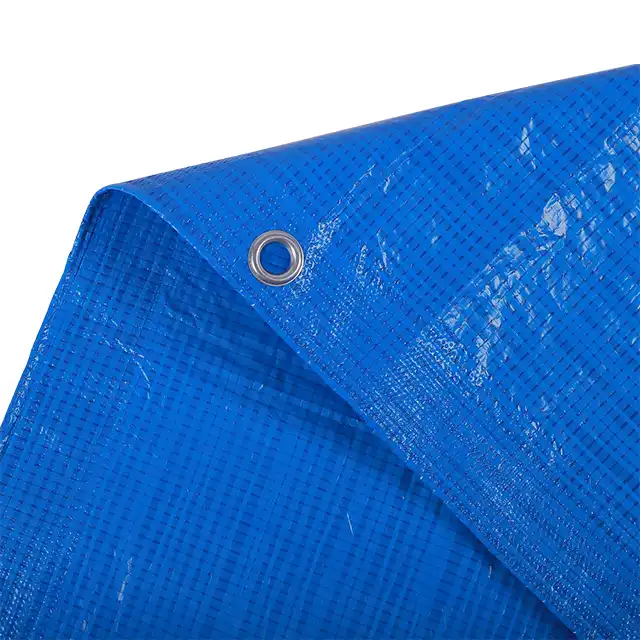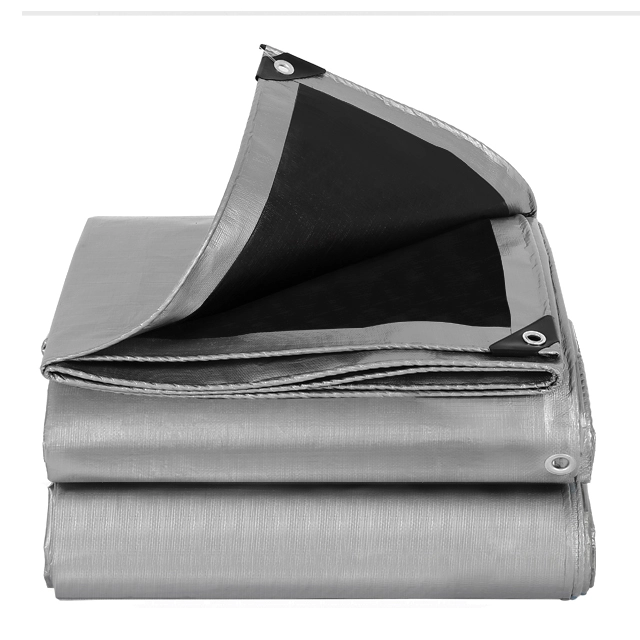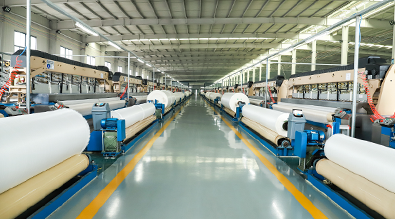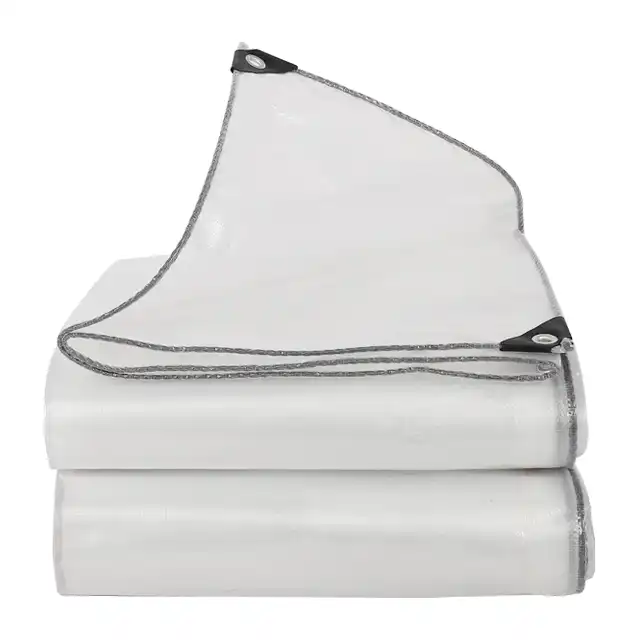Comparing Tarpaulins for Commercial vs. Residential Use
Picture this: Your construction project comes to a halt because inadequate tarps failed to protect expensive machinery from unexpected rain, or your outdoor furniture deteriorates rapidly under improper covering. Choosing between commercial tarpaulin and residential options is not just about thickness or price—it's about understanding which solution matches your specific protection requirements, durability expectations, and budget constraints. This comprehensive guide breaks down the critical differences between commercial and residential tarpaulins, helping you make informed decisions that protect your investments effectively while avoiding costly mistakes.
Understanding Commercial Tarpaulin Requirements

Commercial tarpaulin applications demand exceptional durability and performance standards that far exceed typical residential needs. In industrial environments, construction sites, transportation logistics, and large-scale agricultural operations, tarps face continuous exposure to extreme weather conditions, heavy mechanical stress, and harsh chemicals. A commercial tarpaulin must withstand constant UV radiation, temperature fluctuations ranging from freezing winters to scorching summers, and frequent handling during loading and unloading operations. These tarps typically feature heavy-duty construction with high-density polyethylene woven fabric and reinforced LDPE coating, offering superior tear resistance and waterproof capabilities that maintain integrity even under the most demanding conditions. The manufacturing specifications for commercial tarpaulin products reflect these rigorous demands. Professional-grade tarps generally range from 180gsm to 280gsm in weight, featuring mesh counts between 12x12 and 14x14 for maximum strength. The thickness typically spans from 10 to 14 mils, providing robust protection against punctures, abrasions, and environmental degradation. UV treatment percentages often reach 5-7% for extended outdoor lifespan, while reinforced edges with heat-sealed seams and rust-proof aluminum or brass grommets spaced every 18 to 36 inches ensure secure fastening under high wind loads. These specifications translate directly into longer service life, reduced replacement frequency, and ultimately lower total cost of ownership for businesses requiring reliable, consistent protection across multiple applications.
-
Heavy-Duty Construction Applications
Construction sites represent one of the most demanding environments for commercial tarpaulin use, where protection extends beyond simple weather coverage. Heavy machinery, building materials, scaffolding equipment, and sensitive electronic tools require continuous shielding from rain, dust, debris, and UV damage throughout project timelines that may span months or years. Commercial grade PE tarpaulin sheets designed for construction applications incorporate fire-retardant properties, enhanced tear resistance, and anti-corrosion features that prevent material degradation when exposed to cement dust, chemical splashes, and construction debris. The ability to customize sizes up to 5 meters in width without seams eliminates weak points, while the waterproof membrane prevents moisture infiltration that could compromise structural materials or cause equipment malfunction. Construction companies benefit significantly from commercial tarpaulin products that offer Arctic flexibility, remaining pliable and functional even in sub-zero temperatures. This characteristic proves essential for projects in cold climates where traditional tarps become brittle and crack under stress. The shrink-proof nature of quality commercial tarps ensures dimensional stability, maintaining proper coverage without distortion or sagging over extended deployment periods. When covering building materials such as lumber, cement bags, or steel components, the breathability factor must be balanced against waterproof requirements—high-quality HDPE woven fabric with LDPE coating achieves this balance, preventing condensation buildup while blocking external moisture completely.
-
Transportation and Logistics Protection
The transportation industry relies heavily on commercial tarpaulin for cargo protection during transit across diverse geographical regions and weather conditions. Truck covers, flatbed tarps, and container liners must meet stringent standards for securing loads while preventing cargo damage from rain, wind, road debris, and temperature extremes. Commercial trucking tarps undergo continuous stress cycles during tying, covering, and removal operations, requiring exceptional abrasion resistance and tear strength that residential tarps simply cannot provide. The integration of reinforced edges, multiple tie-down points, and D-ring attachments enables secure fastening that prevents tarp movement at highway speeds, protecting both cargo and other motorists from flying debris or load shifting. Logistics operations for aquaculture products, agricultural goods, and perishable materials demand specialized commercial tarpaulin solutions with specific functional characteristics. Impermeable tarps for fish farming and water storage applications require absolute waterproof integrity without any seepage, achieved through advanced lamination techniques and quality control testing. These tarps must resist algae growth, chemical treatments, and constant water exposure without deteriorating or leaching harmful substances. For orchard rain covers and greenhouse applications, commercial grade tarps balance light transmission, UV protection, and weather resistance, creating optimal growing conditions while protecting crops from excessive precipitation or frost damage. The monthly production capacity of 4000 metric tons by leading manufacturers ensures consistent supply for large-scale commercial operations requiring bulk quantities with standardized quality specifications.
Residential Tarpaulin Applications and Selection
Residential tarpaulin needs differ fundamentally from commercial requirements, focusing on occasional use, aesthetic considerations, and cost-effective protection for household items and recreational activities. Homeowners typically seek tarp solutions for covering outdoor furniture during winter months, protecting vehicles from weather exposure, creating temporary shade structures for patios, or covering equipment during yard work and renovations. These applications generally involve shorter exposure durations, less mechanical stress, and lower frequency of deployment compared to commercial environments. Consequently, residential tarps can utilize lighter weight construction ranging from 65gsm to 140gsm, offering adequate protection while remaining affordable and easy to handle for individuals without specialized equipment or training. The selection criteria for residential tarpaulin products emphasize versatility, ease of storage, and multiple functionality rather than maximum durability or specialized performance characteristics. A typical homeowner benefits from medium-duty poly tarps weighing 100-140gsm, featuring standard mesh counts of 10x10 to 12x12 that provide sufficient strength for common household applications without excessive weight or cost. These tarps typically measure 6 to 10 mils in thickness, offering good waterproof protection and reasonable UV resistance for seasonal outdoor use. Color options become more important in residential contexts, with blue, green, silver, and clear variations allowing homeowners to match aesthetic preferences or specific functional requirements such as light transmission for temporary greenhouse structures or reflective properties for heat management under summer sun exposure.
-
Outdoor Furniture and Equipment Protection
Protecting outdoor furniture, grills, garden equipment, and recreational items represents a primary residential tarpaulin application where proper selection significantly extends the lifespan of valuable possessions. Quality residential tarps create effective barriers against rain, snow, bird droppings, tree sap, and UV degradation that would otherwise cause fading, rust, mold, and structural deterioration. The key consideration for furniture protection involves selecting appropriately sized tarps with sufficient drape to cover items completely while incorporating ventilation strategies to prevent moisture accumulation underneath. High-quality PE tarpaulin sheets with 100gsm weight and 3-5% UV treatment provide excellent protection for patio furniture during off-seasons, maintaining fabric integrity and preventing metal corrosion through waterproof coverage combined with tear-resistant construction that withstands wind without shredding. Homeowners should consider the ease of handling when selecting residential tarpaulin for furniture protection, as frequent covering and uncovering operations benefit from lightweight yet durable construction. Tarps featuring reinforced aluminum grommets at reasonable spacing allow secure fastening with bungee cords or ropes, preventing wind displacement while enabling quick removal when access is needed. The shrink-proof characteristic ensures tarps maintain their original dimensions through multiple season cycles, eliminating the frustration of covers that no longer fit properly after sun exposure. For specialized equipment like lawn mowers, power tools, or bicycles stored outdoors, selecting tarps with anti-freezing properties ensures the covering remains flexible during winter months, facilitating easy access without struggling with frozen, brittle material that can tear during cold-weather handling.
-
Temporary Shelter and Recreational Use
Recreational applications for residential tarpaulin include camping shelters, picnic ground covers, beach canopies, and emergency rain protection during outdoor events, where portability and quick setup take priority over long-term durability. Lightweight PE tarpaulin products weighing 80-120gsm serve these purposes excellently, folding compactly for transport while deploying rapidly to create effective weather protection. Camping enthusiasts particularly value tarps with multiple grommet placement options enabling various configuration possibilities—from simple lean-to shelters to more complex A-frame or diamond-shaped structures that maximize coverage while minimizing material requirements. The waterproof nature of properly constructed residential tarps prevents ground moisture from seeping through when used as ground covers, keeping camping gear dry and comfortable during outdoor adventures. DIY enthusiasts discover numerous creative applications for residential tarpaulin products beyond traditional covering purposes, including privacy screens, temporary walls during renovations, paint drop cloths, and garden bed covers for weed suppression. The availability of clear tarps opens additional possibilities such as temporary window replacements after storm damage, greenhouse enclosures for season extension, or windbreaks that maintain visibility while blocking cold drafts. Medium-duty residential tarps balance affordability with sufficient durability for these varied applications, offering functionality that justifies the investment through repeated use across multiple purposes. Homeowners appreciate the easy-to-handle characteristic of appropriately sized residential tarps, enabling single-person deployment and removal without requiring assistance or specialized tools for securing and adjusting coverage as conditions change.
Key Performance Differences Between Commercial and Residential Tarps
The performance gap between commercial tarpaulin and residential options extends across multiple critical dimensions including material density, UV protection levels, tear resistance, waterproof integrity, and expected service life under continuous use conditions. Commercial tarps incorporate tightly woven HDPE fabric with significantly higher thread counts and heavier coating applications, resulting in products that maintain structural integrity and protective capabilities through years of outdoor exposure and mechanical stress. The typical commercial grade tarpaulin features welded seams rather than sewn edges, eliminating weak points where water infiltration or tear propagation might originate. This construction methodology, combined with superior raw material specifications and more rigorous quality control testing, explains why commercial tarps command premium pricing while delivering proportionally greater performance and longevity. Quantifiable metrics clearly demonstrate these performance differences when comparing equivalent-sized commercial and residential tarpaulin products. A 200gsm commercial tarp typically withstands 2-3 times the tear force compared to a 100gsm residential alternative, while UV treatment levels of 6-7% in commercial grades extend outdoor life expectancy to 5-7 years versus 1-3 years for residential tarps with 2-4% UV protection. Waterproof integrity testing reveals commercial tarps maintain zero water penetration under sustained rainfall equivalent to 100mm per hour, while some residential tarps may exhibit minor seepage or wicking through fabric weave patterns under prolonged exposure. These differences directly impact total cost of ownership—a commercial tarpaulin costing three times more than a residential option but lasting five times longer represents superior value for businesses requiring reliable, uninterrupted protection of valuable assets and materials.
-
Material Composition and Manufacturing Standards
The fundamental distinction between commercial tarpaulin and residential alternatives begins with material selection and manufacturing processes that determine final product characteristics. Commercial grade tarps utilize virgin high-density polyethylene resins extruded into yarns ranging from 1000D to 2500D denier thickness, creating exceptionally strong base fabric that resists elongation and maintains dimensional stability under load. These yarns undergo precision weaving on advanced water-jet looms imported from Korea and Japan, producing fabric with consistent mesh patterns and optimal thread interlocking that maximizes tear propagation resistance. The coating process for commercial tarps employs specialized lamination equipment applying multiple layers of low-density polyethylene that completely encapsulate each yarn intersection, creating a monolithic waterproof membrane while preserving fabric flexibility and preventing delamination under repeated flexing cycles. Residential tarpaulin manufacturing typically incorporates cost-reduction strategies including blended or recycled polyethylene content, lighter yarn weights around 400D to 800D, and single-pass coating processes that achieve basic waterproofing without the excessive material application required for commercial-grade performance. Quality control standards differ substantially as well—commercial tarp manufacturers implement comprehensive testing protocols measuring tensile strength, tear resistance, UV degradation rates, waterproof integrity, and dimensional stability according to international standards such as ISO 9001:2015 certification requirements. Third-party laboratory testing validates commercial product specifications, providing documented performance guarantees that support warranty claims and quality assurance for business procurement decisions. Residential tarp producers may conduct basic quality checks but generally lack the extensive validation processes and documentation that characterize commercial manufacturing operations.
Making the Right Choice for Your Specific Needs
Selecting between commercial tarpaulin and residential options requires honest assessment of actual usage requirements, exposure conditions, replacement frequency expectations, and total cost considerations beyond initial purchase price. Businesses facing regulatory compliance requirements, insurance conditions, or client expectations for professional-grade protection have little choice but to invest in commercial grade tarps that meet specified performance standards and provide documentation supporting quality claims. Construction companies, transportation operators, and agricultural enterprises treating tarps as essential operational equipment rather than disposable covering material consistently choose commercial products despite higher upfront costs, recognizing that reliability, longevity, and reduced maintenance translate directly into operational efficiency and competitive advantage. Homeowners benefit from practical evaluation of genuine protection needs versus aspirational specifications that exceed actual requirements, potentially wasting money on commercial-grade performance that residential applications never fully utilize. Covering garden furniture for 6 months annually rarely justifies commercial tarpaulin investment when quality residential products costing one-third the price deliver adequate protection for typical 3-5 year residential service life expectations. However, homeowners maintaining valuable equipment collections, operating home-based businesses with outdoor storage needs, or residing in extreme climate regions with intense UV exposure and severe weather patterns may find commercial grade tarps represent wise investments providing peace of mind and eliminating frustration from frequent residential tarp failures and replacements.
-
Cost Analysis and Value Considerations
Comprehensive cost analysis comparing commercial tarpaulin versus residential alternatives must extend beyond simple price-per-unit comparison to encompass total ownership costs including replacement frequency, labor for installation and removal, disposal expenses, and potential loss or damage to protected assets due to tarp failures. A typical 4x6 meter residential tarp priced at $30-50 requiring replacement every 18-24 months accumulates $150-250 in material costs over a 5-year period, plus recurring labor for shopping, installation, and disposal. Alternatively, a commercial grade tarpaulin costing $150-200 for equivalent dimensions potentially serves the full 5-year period without replacement, eliminating additional shopping trips, installation labor, and disposal hassles while providing superior protection that reduces risk of damage to covered assets worth hundreds or thousands of dollars. Bulk purchasing considerations further influence cost-benefit analysis for commercial applications requiring multiple tarps for comprehensive coverage across facilities, vehicle fleets, or equipment inventories. Commercial tarpaulin manufacturers offer volume discounts, customization options for specific dimensions or features, and consistent supply chains ensuring replacement units match existing specifications exactly—advantages that simplify procurement and standardize operational procedures across multiple locations or seasons. Residential consumers purchasing individual tarps forgo these advantages but benefit from retail competition and readily available standard sizes suited for common household applications. The availability of commercial tarps from China manufacturers, suppliers, and wholesalers introduces significant price advantages for businesses importing directly, accessing factory pricing that substantially reduces per-unit costs compared to domestic retail channels while maintaining ISO-certified quality standards and customization capabilities.
Conclusion
Choosing between commercial tarpaulin and residential options fundamentally depends on matching product specifications to actual protection requirements, exposure conditions, and value expectations. Commercial applications demanding long-term reliability, superior weather resistance, and regulatory compliance justify premium investments in heavy-duty construction and certified performance standards. Residential users benefit from honest needs assessment, selecting appropriately specified tarps that deliver adequate protection without unnecessary cost. Quality matters across both categories—partnering with established manufacturers ensures consistent specifications, reliable performance, and fair pricing whether purchasing high-volume commercial supplies or individual residential tarps for household applications.
Cooperate with Linyi Shengde Plastic Co., Ltd.
When you need a trusted China commercial tarpaulin factory offering proven quality and competitive commercial tarpaulin price, Linyi Shengde Plastic Co., Ltd. delivers comprehensive solutions backed by two decades of manufacturing expertise. As a leading China commercial tarpaulin manufacturer and China commercial tarpaulin supplier, we produce High Quality commercial tarpaulin for UNHCR, IOM, ICRC, and UNICEF partnerships, exporting to over 30 countries across five continents. Our facility operates 400+ Korea-imported water-jet looms, unique 5m width fabric weaving capability, and maintains ISO 9001:2015 certification with complete quality monitoring systems throughout production processes. Whether you require commercial tarpaulin wholesale volumes or customized specifications, our research and development team creates tailored solutions including ultra-wide braiding, fire prevention functions, and enhanced waterproof capabilities. We have commercial tarpaulin for sale in weights from 65gsm to 280gsm, available in any color with monthly production capacity exceeding 4000 metric tons. Contact our team at info@shengdetarp.com to discuss your specific requirements and receive detailed quotations for reliable, fairly-priced PE tarpaulin products delivered on schedule with best-in-class customer service supporting your success.
References
1. Peterson, R. & Williams, M. (2023). Industrial Fabric Performance Standards and Applications. Technical Textiles Association.
2. Thompson, J. (2024). Polymer Materials for Protective Coverings: A Comprehensive Guide. Materials Engineering Press.
3. Anderson, K. et al. (2022). Comparative Analysis of Tarpaulin Materials in Commercial and Residential Applications. Journal of Applied Protective Materials, 15(3), 112-145.
4. Davis, L. (2023). Cost-Benefit Analysis of Protective Covering Systems for Commercial Operations. Industrial Management Review, 28(2), 67-89.




